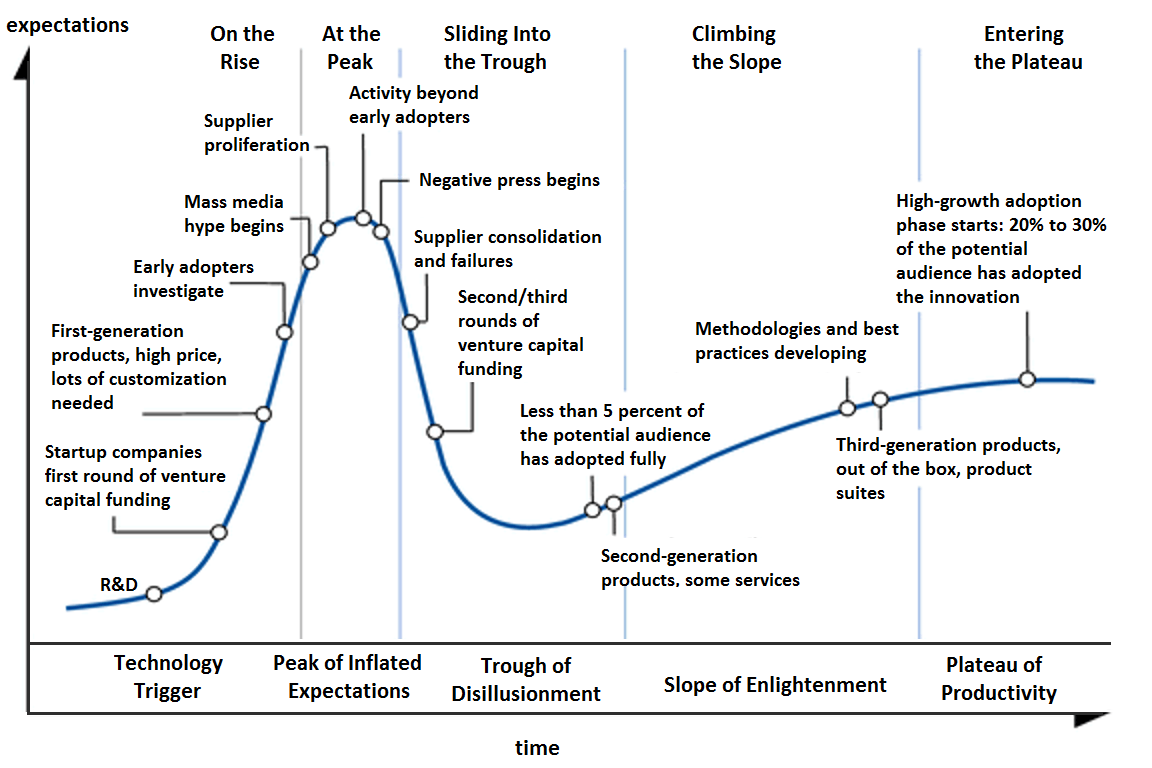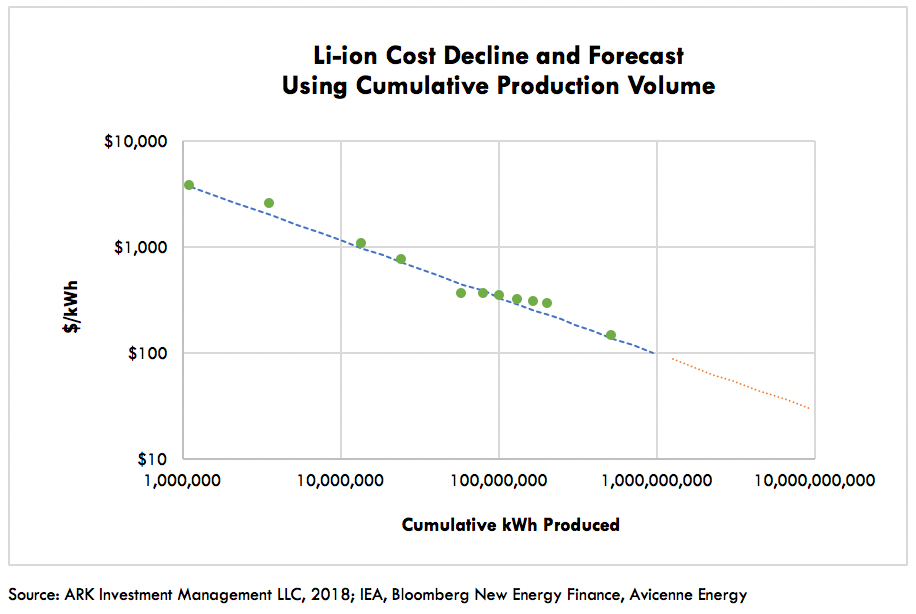Timing of Innovation – Getting the Odds on Your Side
When it comes to innovation, there are countless ways things might go wrong. However, one of the most prevalent ones is incorrect timing.
If you manage to get the timing just right, your innovations will obviously benefit from huge tailwinds when entire industries are transitioning from the old to the new with you riding at the top of the wave. With the right timing, even mediocre execution can lead to extraordinary results.
On the other hand, get it wrong, and you’ll fail almost inevitably, no matter how great your idea and execution are.
So, while it isn’t easy to get the timing right with innovation, understanding the concept of timing and the dynamics involved, will be crucial for your long-term success as an innovator.
This article seeks to help you achieve just that to get the odds on your side.
Table of contents
The importance of timing in innovation
As mentioned, the difference between well-timed and ill-timed innovation often makes all the difference in the world.
A few years ago, Idealab founder Bill Gross studied the factors that determined whether a startup would succeed or fail. He studied all 100 Idealab companies, as well as 100 others, both successful and unsuccessful, and analyzed their cases.
To his surprise, timing was clearly the biggest factor in explaining the end result.
And the same very much holds true in innovations within larger organizations as well.
As mentioned, when the time is ripe for an innovation, a lot of things seemingly just fall into place, and when it isn’t, it looks like the whole world is stacked against you. No matter what you do or how well you execute, you just end up in a dead-end.
When the time is ripe for an innovation, a lot of things seemingly just fall into place, and when it isn’t, it looks like the whole world is stacked against you.
The problem with timing is that every innovation only has a relatively small window of opportunity that happens when the technology and customers are ready, but there isn’t much entrenched competition. In essence, this means that usually the time isn’t right for most innovations.
What's more, the digital age has further highlighted the importance of getting timing right, because many markets have quickly transitioned from local to global, winner-takes-most markets. In these markets, the couple of companies that are first to scale, reap nearly all of the rewards.
How can timing go wrong?
Before we try to figure out if the timing is right or wrong, we need to understand that there are, obviously, two different ways it can be wrong.
Being too late
The most common way companies, startups and incumbents alike, get timing wrong, is by being too late.
In many cases, incumbent companies don’t want to spend a lot of money on R&D, so they wait to see a technology develop and become more widely adopted, and then seek to be fast followers. While smart on paper, this strategy has become much harder to implement successfully in the digital age.
When your competitors have had years to refine their knowledge and understanding of a specific technology or the needs of a given customer segment, it’s usually very hard to catch them once you see them having significant traction, as long as they’ve played their cards right.
Developing the needed skills, capabilities and understanding isn’t often trivial, and just like in sports, it’s really hard to all of a sudden start sprinting at full speed when you’ve been on the sidelines for ages. Startups often face the same problem, but for different reasons. Entrepreneurs too often fall into the trap of “me too innovation" by trying to create the next social media network, “Uber for X”, or perhaps most recently, the latest chatbot software.
Startups often face the same problem, but for different reasons. Entrepreneurs too often fall into the trap of “me too innovation" by trying to create the next social media network, “Uber for X”, or perhaps most recently, the latest chatbot software.
In general, when you’re late to the market, it’s really hard to catch up, or compete head-to-head with the entrenched competition, especially if they’re already on the exponential part of the growth curve.
Plus, even if you try to find a clearly differentiated Blue Ocean Strategy of your own, it will be much more difficult when there’s already tons of competition.
Being too early
While not as common as being too late, it’s actually quite easy to be too early as well.
You can obviously be too early if you’re trying to create a business with a technology that simply doesn’t work, or isn’t yet ready for commercial use yet, just like nuclear fusion has been so far.
As a result, some, often large, companies spend a lot of time and money on basic research or foundational R&D, only to find themselves having a hard time commercializing those projects, until they eventually run out of money or patience.
But, there’s more to being too early than just technology. It can be that the cost of building a solid value proposition around your innovation is too high to meet demand at this point. For most manufacturers of electric cars, this has basically been the case so far, even though we're probably very close to an inflection point now. It can also be that the infrastructure and ecosystem needed to make your innovation valuable for customers just doesn’t exist yet. For example, smartphones didn’t really become mainstream until 3G mobile data connections actually made them useful for the average consumer.
It can also be that the infrastructure and ecosystem needed to make your innovation valuable for customers just doesn’t exist yet. For example, smartphones didn’t really become mainstream until 3G mobile data connections actually made them useful for the average consumer.
Also, when you’re too early, there’s always a lot of uncertainty, which means that you might often have make big, often hard-to-change, decisions that end up being wrong and leading to your demise. An example of this can be a bet on the wrong technology or ecosystem, like Sony did with Betamax.
In general, when you’re too early, you simply won’t be able to put together a solid value proposition, or at least generate much demand for it.
Getting timing right
So, since it’s so easy to be either too early or too late, how can you get the timing right?
Unfortunately, there isn’t a proven formula, but there are frameworks that can help us understand the phenomena better.
There isn’t, unfortunately, a proven formula for always getting timing right, but there are frameworks that can help us better understand the phenomena.
The Gartner Hype Cycle
Probably the most famous framework related to timing innovation is the Gartner Hype Cycle: The Hype Cycle, obviously created by Gartner, is a framework that tries to show the expected or perceived value that a given innovation or market currently has, which can be a really helpful tool for those seeking to understand when an innovation is just hype, and when it is actually starting to deliver value.
The Hype Cycle, obviously created by Gartner, is a framework that tries to show the expected or perceived value that a given innovation or market currently has, which can be a really helpful tool for those seeking to understand when an innovation is just hype, and when it is actually starting to deliver value.
The idea is that once an innovation starts picking up steam, it often gets overhyped in the press and the business community. Soon thereafter, people realize that the hyped capabilities weren’t real, at least just yet, at which point most people become disillusioned and stop believing in the given innovation. Then, little by little, as the technology or innovation matures, it starts creating more and more real value and eventually reaches real productivity gains.
Now, when it comes to the Hype Cycle, there isn’t a single correct phase to invest in, as that depends on what kind of innovations you’re working on, but for most organizations and innovations that are primarily focused on exploiting new technologies, it’s often a good to start investing in promising technologies or innovations that are currently in the Trough of Disillusionment.
That’s when most of the heavy lifting has usually been made, but the pieces of the puzzle just need to be assembled the right way. In other words, that’s when the technologies are no longer research or science projects, but simply engineering challenges, and the infrastructure and ecosystems are starting to shape up.
Wright’s Law
New technology and innovations are often expensive in the beginning because the R&D costs still need to be offset, and the production volumes are low, which means that unit costs will be high.
As a result, these technology-based innovations simply aren’t attractive to the majority of potential customers. However, once the prices drop enough, the situation usually shifts, and demand suddenly picks up dramatically.
The companies that are the first, or among the first, to scale, are thus going to be the ones to reap the biggest financial rewards.
So, ideally, you’d want to understand how production costs are going to change in the future, and position your R&D efforts so that you’re well positioned to strike and expand rapidly when the prices eventually meet mainstream demand.
That’s exactly where Wright’s Law comes in.
Back in the 1930s, Theodore Wright noticed that the cost of manufacturing airplanes was reduced by a fixed percentage every time that production volume doubled.
Since then, his Law has successfully predicted the cost declines across a variety of industries like automotive and lithium-ion batteries, as presented in the chart below, courtesy of ARK Invest. This cost decline is a result of economies of scale, as well as the experiences gained, and improvements made during the increased production.
This cost decline is a result of economies of scale, as well as the experiences gained, and improvements made during the increased production.
So, while Wright’s Law can help you forecast the future of price development in a given industry, it doesn’t mean that you can just wait on your laurels and hop in when the price is right.
In most cases, to be able to be competitive when the price reaches the desired threshold, you need to already have sufficient experience and scale. However, by understanding how the prices are going to behave, you can plan your product roadmap accordingly.
A great example of this is Tesla. From the very beginning, they had a plan of starting with more expensive, very high-end cars that could be sold profitably at lower volumes, most notably the Model S. With the increased production and technological advancements, they’ve since been able to gradually increase production and travel down the cost curve with their subsequent, more affordable and higher volume products like the Model 3.
Trends and regulatory changes
The final, unequivocally more ambiguous, part of the puzzle is understanding the big trends and upcoming regulatory changes in a given industry, and even across industries.
The impact of upcoming regulatory changes is quote obvious. It requires companies to adapt, innovate, and find new ways to be competitive. Many big companies see regulatory changes as primarily as threats and are thus spending heavily in lobbying against such changes.
However, in many cases, these regulatory changes are simply an inevitable end result of lasting, secular trends, sometimes referred to as megatrends.
Examples of current, well-known megatrends are the rise of automation and artificial intelligence, the call for increased sustainability, and the ageing population in developed nations. These are all trends that will, without a doubt continue to grow for decades to come. Thus, the time and resources spent on lobbying is simply a fight for delaying the inevitable.
These are all trends that will, without a doubt continue to grow for decades to come. Thus, the time and resources spent on lobbying is simply a fight for delaying the inevitable.
The much smarter choice would be to accept and embrace the changes, and to try to be on the winning side by innovating accordingly.
The smart choice is to accept and embrace the changes brought by secular megatrends, and to try to be on the winning side by innovating accordingly.
And, of course, if you’re looking for new growth opportunities, the most promising ones are industries that have been stagnant for extended periods of time but are likely to experience massive change going forward.
In these industries, the incumbents have very little experience from adapting to change, and most of their processes are actually designed to actively prevent change.
This means that you’re likely going to have a much wider window of opportunity for getting the timing right, which provides you with excellent opportunities for grasping significant market share, and also to grow the industry beyond its current boundaries.
Getting the odds on your side
However, even if you are able to understand the dynamics involved, you’re still very unlikely to get the timing just right.
It’s almost inevitable that you’re either a bit early, or a bit late.
The key is to understand which side of the spectrum you’re on, and then working to plan your approach and strategic positioning to give yourself the best possible odds for succeeding.
You're inevitably either a little late or early, and the key is to understand which side of the spectrum you’re on, and then plan your strategy accordingly.
In my experience, there are certain patterns and strategic approaches that are better suited for early movers, and others for those who are a bit late to the party.
Early mover strategies
When you’re an early mover, you’re in a position where you don’t really have a lot of support: there are very few potential suppliers and partners, the technology isn’t often quite ready, and you also need to educate your customers.
That means that you can’t really rely on others to help you get where you want to be. You need to control your own destiny and take matters into your own hands.
In practice, that means that you’re going to have to have a high degree of vertical integration.
In essence, vertical integration means that taking control of a large portion of the supply chain from end-to-end, instead of relying solely on a complicated network of partners and suppliers.
There are a number of key reasons for this being such a great strategy for early movers. It allows the business to have much more control over the offering, which is crucial for innovations that are still nascent.
First and foremost, emerging innovations usually aren’t yet good enough for the majority of potential buyers and having more control over the offering allows the company to more quickly and easily develop and adjust it to match customer expectations.
Second, this approach allows the company to have more control over the quality of the offering and the end-to-end customer experience, which are key because emerging innovations are typically on the more expensive side, as previously discussed, which again means that customers are expecting a premium experience.
Finally, as price is likely a key barrier for future growth of early movers, vertical integration also allows the company to cut out the middlemen and either capture more margin or make prices more affordable, as long as it invests in making and keeping operations lean and cost-effective.
There are many examples of companies that have succeeded with this strategy, perhaps most famously Apple with both their original personal computers, as well as all of their recent products.
Vertical integration can provide early movers with significant advantages that are nearly impossible to overcome, and exceptional financial returns when successful.
However, vertical integration also requires continued investment into innovation and into growing and maintaining the advantages the company has acquired, or the company risks being trapped by an ageing ecosystem with inferior technology, which is essentially what happened to Nokia’s phone business at the dawn of the smartphone era.
Late follower strategies
If you’re a late follower or entrant to a given market or innovation, your challenges are very different. You are likely fighting a battle against entrenched competitors who are already far ahead of you, especially in terms of ecosystem strength, and usually also in technology.
In that case, the approach you need to take will also be very different. You can’t really expect to compete head-on with the giants, so your best bet is to find your own Blue Oceans, that allow you to expand the market with your innovations, instead of having to enter into a bloody battle for the same customers that the incumbents are serving.
If you do decide to go head-on against the early movers, your best bet is likely to build a strong ecosystem with a radically open and modular architecture to combat the vertical integration of those who came before you.
An open, modular approach can allow you to build a strong alliance together with all the other laggards to the market to fight your battle with you, and to try to become the industry standard.
The IBM PC and Android are both great examples of this. Both entered a rapidly growing market a bit late, and with the backing of a major company, introduced an open standard that anyone in the industry could be a part of. As the majority of the industry was even more late, they quickly realized that their best bet was to embrace this new ecosystem, which led to both platforms quickly becoming the clear market share leaders by capturing most of the new demand from the the markets expanding far beyond their original boundaries, especially in the low-end.
Portfolio approach
As you can see, getting the technology, strategy, and business model all right at the same time is a tough task for any innovator, and realistically, luck always plays a big role in determining success in innovation.
Fortunately, large organizations have a great tool at their disposal to get the odds on their side and combat this uncertainty: the portfolio approach.
The good thing with ambitious innovation projects is that even if many of them fail, the winners are likely to lead to outsized returns that more than pay up for the failures.
Thus, by having a balanced portfolio consisting of many new innovation initiatives, a large organization can significantly reduce the risk associated with all of their innovation efforts failing, and also make growth more predictable.
Startups, on the other hand, don’t have that luxury. They can realistically only afford to go all-in on a single innovative business idea, which is a big reason for why they statistically speaking fail nearly every time. And conversely, is also the reason for why the returns can be so great, should they succeed against the odds.
Conclusion
As you’ve hopefully realized by now, timing is an extremely important factor for innovation success, and luck unfortunately plays a big role in it.
However, by being conscious of the importance of getting timing right, and by seeking to understand the dynamics of your innovation and your industry, you can significantly improve your odds of getting it right.
And, even more importantly, by being aware of the dynamics related to timing innovation, you can also choose strategies and tactics that are more likely to succeed, given the lifecycle of innovation in your specific market.
Still, when it comes to timing, the best you can ultimately do is to get the odds on your side.
__________
Join thousands of other innovators and get the latest insights on leading innovation!






